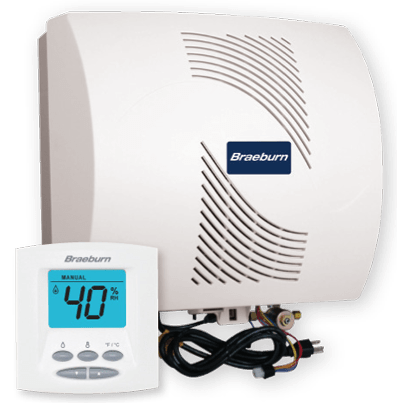
Thermostats are devices that control both the heating and cooling system and hold a lot of importance in millions of homes because they provide relief from the coldness or hotness of extreme weather conditions and comfort during the hot and cold seasons. They detect the temperature of the room to check if it is within the desired temperature setting. If it’s too warm or too cold, you can use your thermostat to turn on the heat or the AC to adjust it to the preferred temperature – or your thermostat can do it for you.
When you think about it, a thermostat is really just a switch that turns your heating and cooling systems on and off. The thermostat constantly runs in the background, continuously providing comfort to the members of the household. Most of the time, it is overlooked or sometimes even forgotten as it quietly does its job – until it stops working properly.
Types of Thermostats
There are a lot of different types of thermostats available in the market but generally, all of them can be classified into two categories: electromechanical and electronic.
Electromechanical thermostats are the old-fashioned mechanical thermostats that have two strips of metal that form a single bimetal strip. On the other hand, electronic thermostats are the modern models which have more sophisticated temperature controls and timers. Since they are more sophisticated, their inside workings are a bit more complicated which means replacements and repairs are also pricier. However, with electronic thermostats (also referred to as programmable thermostats) you can program the temperature of your home ahead of time even while you are away, something you can't do with their electromechanical counterparts. Programming in advance will also decrease your energy bill making electronic or programmable thermostats the more price efficient option.
Check the cost of electronic thermostats.
How to See If the Thermostat Works
Before you declare your thermostat as having malfunctioned, you have to check first if it has really failed. Here are some things you can do prior to testing your home thermostat.
- Check the batteries - Oftentimes, the problem just lies in drained batteries. Try to replace your thermostat's old batteries first to ensure that your device has enough power.
- Clean the device’s interior - Remove the face of the thermostat and check if its interior has become dusty. Dirt can actually impede the device's functionality so it's important to dust it off with a small brush regularly.
- Note where the device is located - The location of your thermostat has a lot of impact on its performance. It shouldn't be placed in direct sunlight because it will give out higher temperature readings. It also shouldn't be placed near doors and windows because these areas are generally cooler; if your thermostat is placed in these areas, the device will register temperature readings that are cooler than how the room actually feels. Ideally, your thermostat should be placed on the interior wall near the center of your home.
If you have done the following and your device is still not working, then that must mean that there is an issue with its wiring inside. Here's how to test a thermostat in seven easy steps:
Step #1:
First of all, make sure to turn off your furnace before removing the thermostat's cover. This is to ensure that you will be safe from potential burns while working with the device.
Step #2:
Carefully remove the thermostat cover and after doing so, examine the wires. You will find a number of wires inside but don't be overwhelmed. You will only need to find the red and white wires. These are the ones that are standard colors for power and heat.
Step #3:
Unscrew and remove the wires from their terminals. Make sure to not let them fall into the hole in the wall.
Step #4:
Twist the bare ends of the red and white wires together.
Step #5:
Turn the furnace back on. If the blower is working but the furnace burner ignites, the device was connected improperly to the wires. This can also mean that the thermostat is defective and that you will need to have it replaced as soon as possible.
Step #6:
If the burner does not turn on, this means that the wires are not properly connected from the thermostat to the furnace.
Step #7:
Tighten the terminal screws at all wire connections before putting the cover back on.
But what if the thermostat, STILL doesn’t work after this?
Don’t mess with your thermostat too much because you might risk inflicting further damage to your device. Instead, contact an expert technician to look into the matter.

Energy Saving Tips
No one wants to receive a large energy bill but luckily, there are a lot of ways that you can lower your energy consumption especially during this winter season.
Did you know that almost 50% of home energy consumption in the U.S. comes from heating and cooling systems? If you want to save energy to lower your bills, start with your thermostat. Even slight adjustments can have a huge impact on your home's energy usage.
Here are some maintenance tips to optimize your thermostat's performance and efficiency.
- Dial back - You can save up to 10% per year on your energy bills if you adjust your thermostat by dialing your heat or air conditioning back to 10 to 15 degrees when your home is unoccupied or when you and your family are all asleep. These few degrees are not enough to make a noticeable difference when it comes to comfort but go a long way in helping you lower your bills.
- Choose to go modern - Programmable thermostats help saving energy because you won't have to adjust it daily. With a programmable thermostat, you can set it for seven days and then forget about. See the best programmable thermostats.
- Regular tune-up - Your thermostat needs regular maintenance to keep them working properly and efficiently. As stated above, you should keep your thermostat dust-free by brushing it off regularly. However, it is also recommended to call a qualified technician for a yearly tune-up.


